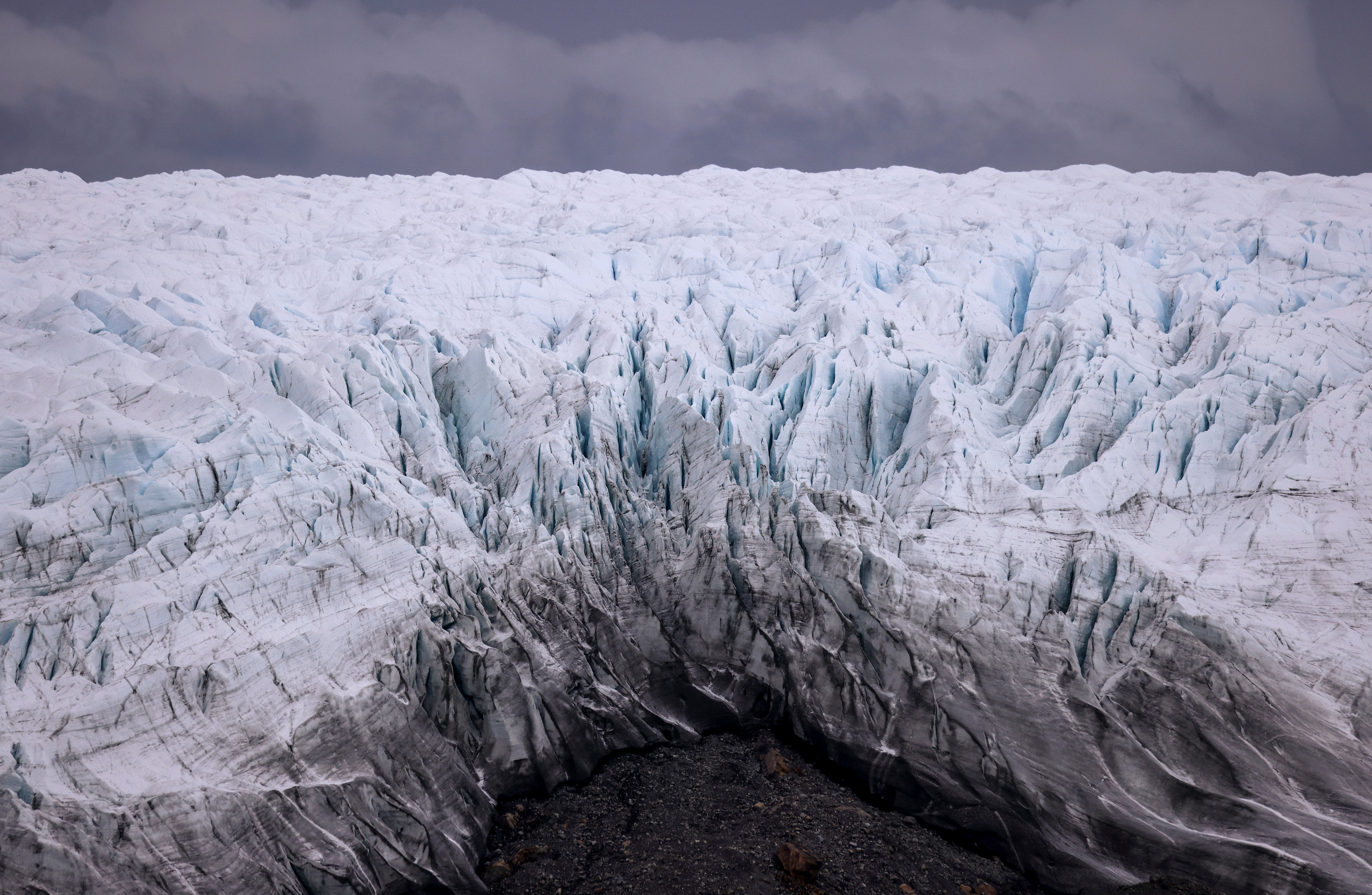Massive meteorite crater is not what scientists originally thought
Massive meteorite impact didn’t terrorise our ancestors after all, scientists find, but struck Earth still recovering from blast that killed off the dinosaurs

Buried under a kilometres of ice, a 31-kilometer-wide meteorite impact crater in Greenland has captivated scientists ever since its discovery in 2015. One of the largest impact craters found on Earth, researchers theorised the impact could have occurred around 13,000 years ago, a period within humanity’s tenure on planet Earth, and causing 1,000 years of global cooling.
But a new study published Wednesday in the journal Science Advances disproves that theory. Rather than bearing responsibility for plunging our distant ancestors into a miniature ice age, the meteorite impact that created the Hiawatha crater was a follow-up punch to the even larger impact that killed off the dinosaurs. Researchers from The Globe Institute at the University of Copenhagen, the Swedish Museum of Natural History, and the Natural History Museum of Denmark have now determined the Hiawatha crater was created around 58 million years ago, just eight million years after the dinosaur-killing meteorite that dug out the Chicxulub impact crater in present-day Mexico.
“Determining the new age of the crater surprised us all,” Dr Gavin Kenny, a geochemist with the Swedish Museum of Natural History and lead author of the paper said in a statement. “In the future, it will help us investigate the impact’s possible effect on climate during an important epoch of Earth’s history.”
The researchers used two analytical approaches to determine the age of the crater, each making use of grains of sand washed out of the buried crater by glacial rivers. The Museum of Denmark team used lasers to heat the sand until it released argon gas and then measured the proportion of different argon isotopes in the sample to date the samples. The Swedish Museum team analyzed the mineral zircon in the sand using a uranium-lead method for dating geologic samples.
“It’s very satisfying that two laboratories in Denmark and Sweden, using different dating methods arrived at the same conclusion,” Michael Storey of the Natural History Museum of Denmark, a study co-author, said in a statement. “As such, I’m convinced that we’ve determined the crater’s actual age, which is much older than many people once thought.”
The new Hiawatha impact date of 58 million years ago means Greenland wasn’t covered by an ice sheet as it is today but was a temperate rainforest with temperatures averaging around 20 degrees Celsius. The impact would have caused widespread destruction, unleashing several million times more energy than a nuclear bomb.
But just how the meteorite impact affected Earth’s climate is a question for future research. Scientists can now rule out the Hiawatha impact as a cause of the cooling period that began around 13,000 years ago. But the new date of the impact could implicate the Hiawatha impact in other climatic changes.
Although the Earth was in the midst of a long-term warming trend 58 million years ago as the planet recovered from the dinosaur-killing Chicxulub impact, the researchers note the geological record shows high levels of carbon stored in bogs and permafrost between 62 and 59 million years ago, which likely correlates with a period of cooler conditions where carbon dioxide was drawn down from the atmosphere.
But it’s too early to conclusively link the Hiawatha impact to such atmospheric changes, the researchers write, particularly due to a lack of samples of material known to have been ejected by the impact at the time it occurred.
Join our commenting forum
Join thought-provoking conversations, follow other Independent readers and see their replies
Comments
Bookmark popover
Removed from bookmarks